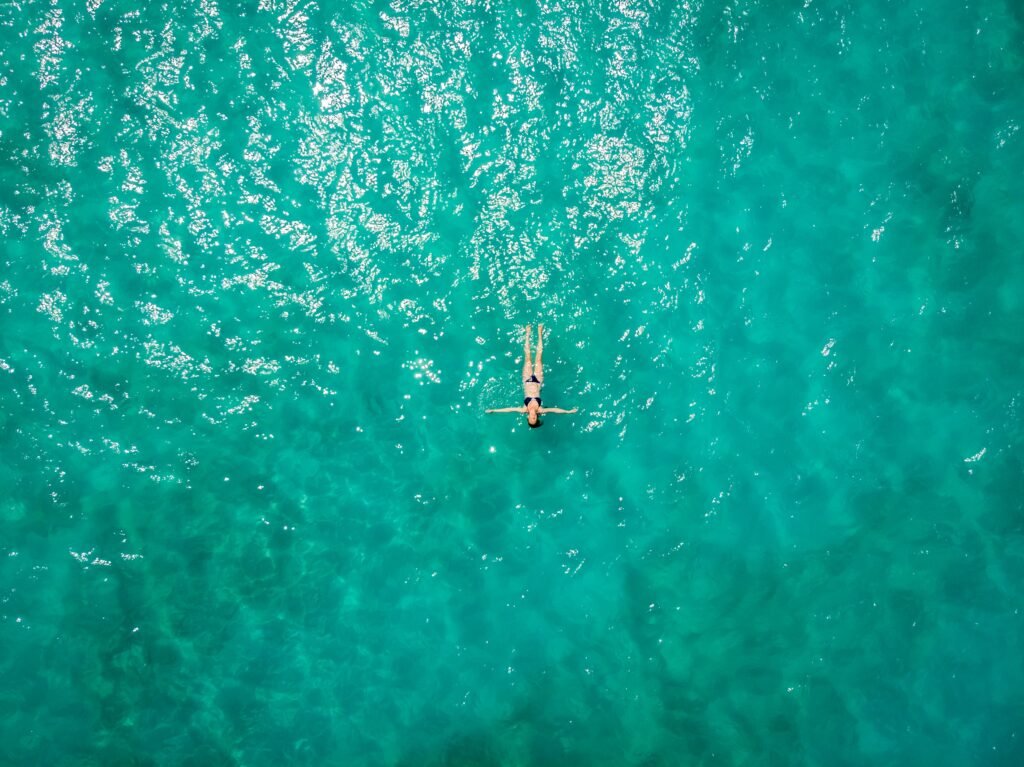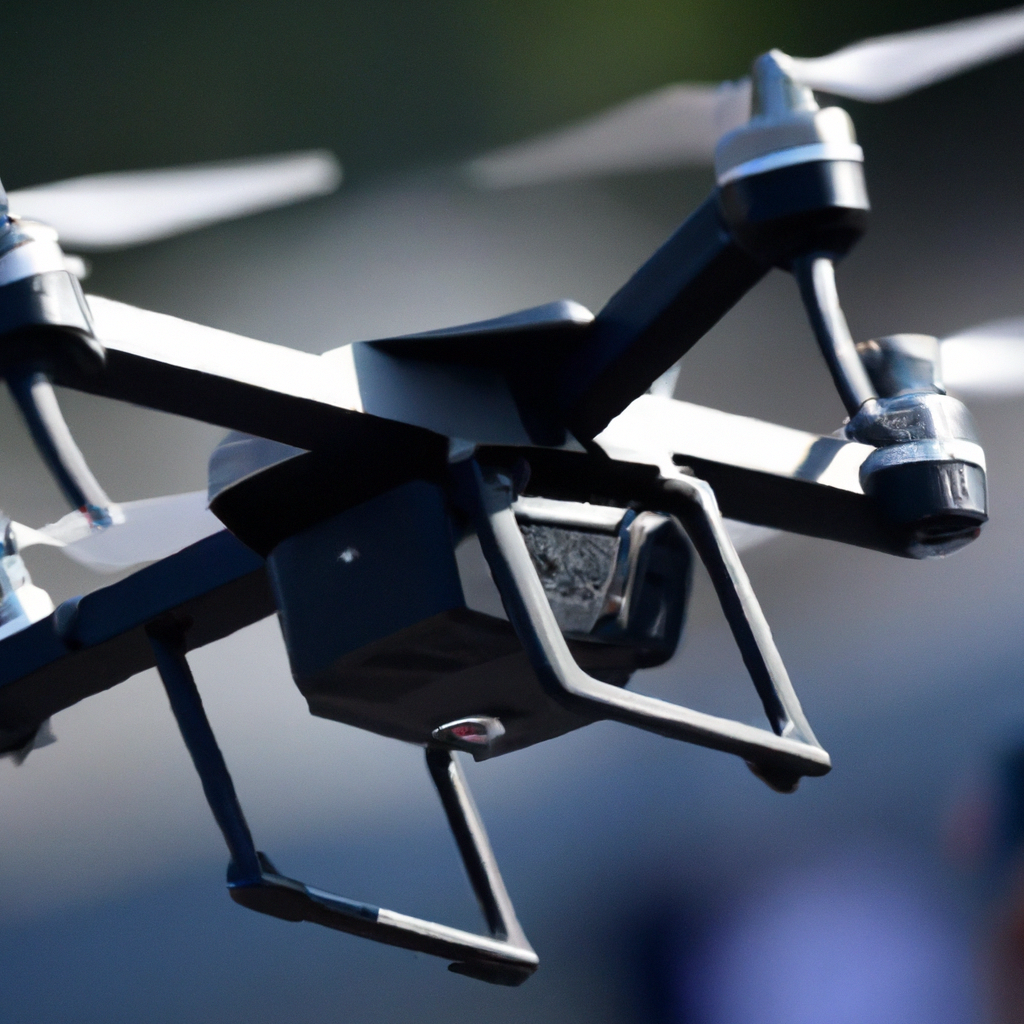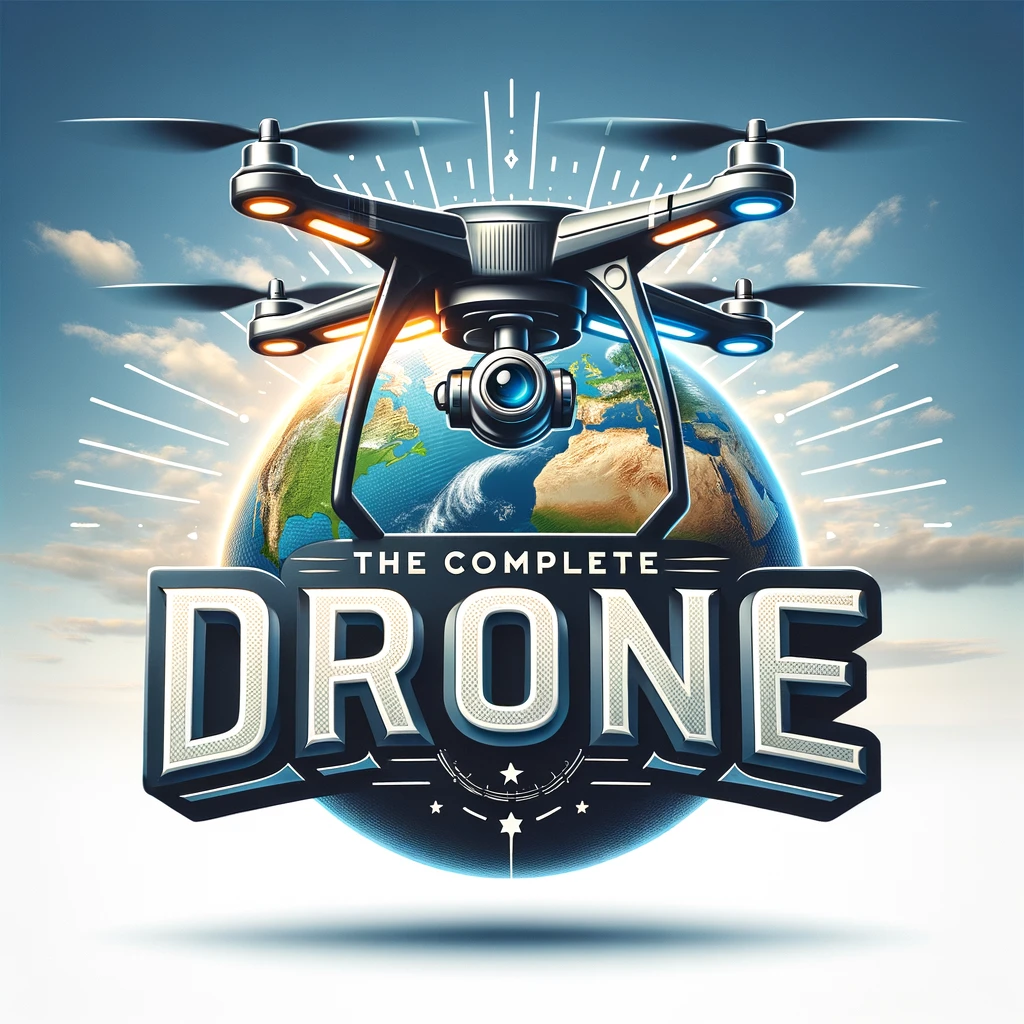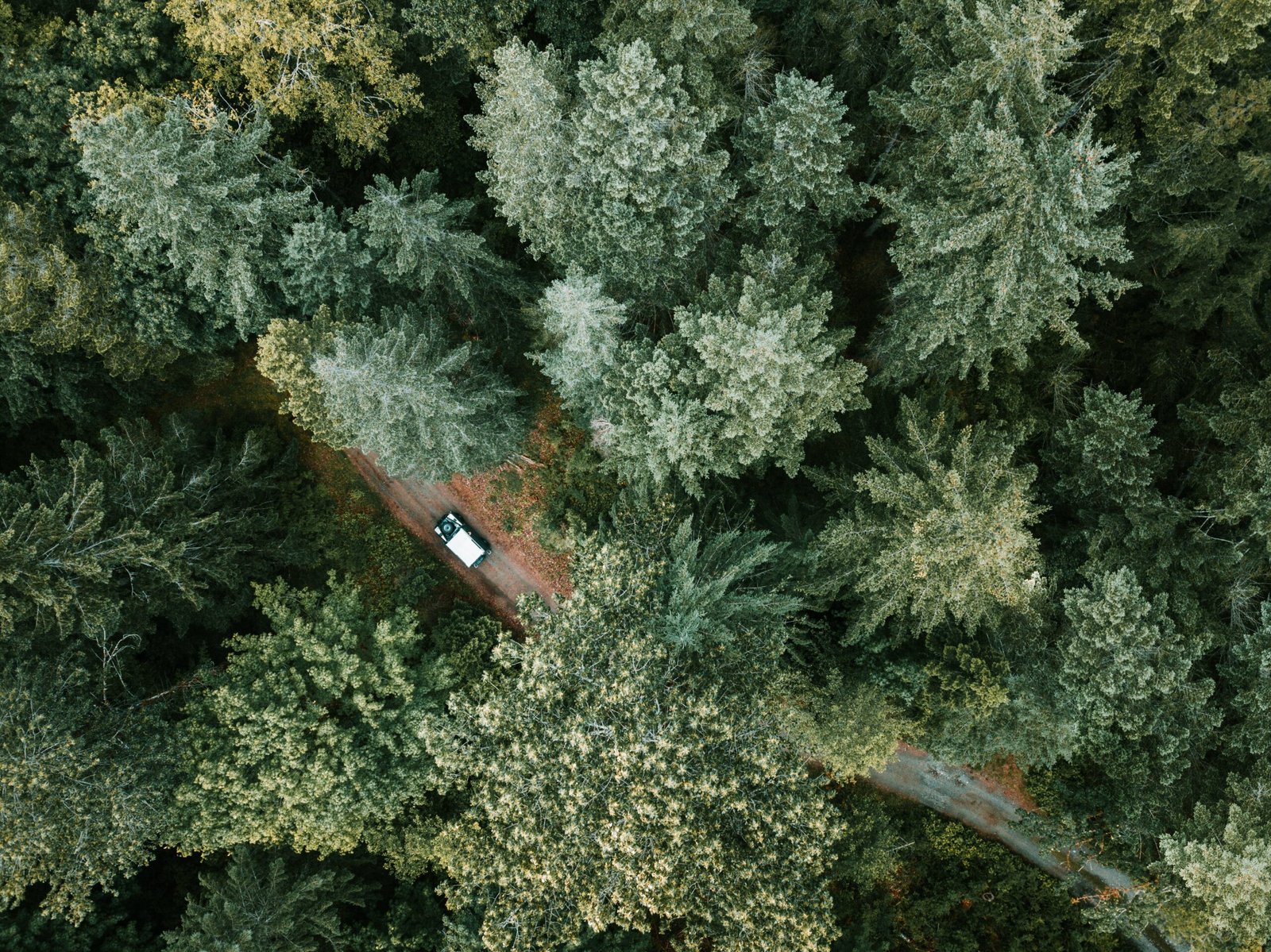Looking to take your first step into the exciting world of drones? Wondering what the best drone for beginners is? Look no further! This article will provide you with all the information you need to choose the perfect drone to kickstart your drone flying adventures. From budget-friendly options to user-friendly features, we’ve got you covered. So, get ready to soar through the skies and capture breathtaking aerial footage with the ideal drone for beginners.
Size and Portability
Mini drones
Mini drones are a popular choice for beginners due to their compact size and portability. These tiny drones are typically small enough to fit in the palm of your hand, making them easy to travel with and fly in tight spaces. They are lightweight and often come with foldable arms, which further enhances their portability. Mini drones are great for indoor use and are perfect for practicing basic flight maneuvers before moving on to larger drones.
Foldable drones
Foldable drones are another excellent option for beginners who prioritize portability. These drones come with collapsible arms that allow them to be easily folded up and carried in a backpack or even a pocket. This makes it convenient to take them on outdoor adventures or trips, ensuring that you can capture stunning aerial footage wherever you go. Despite their compact size, foldable drones still offer a decent flight time and come with impressive features.
Medium-sized drones
If you’re looking for a slightly larger drone that can handle outdoor conditions with ease, medium-sized drones are worth considering. These drones are still relatively portable but offer a bit more stability and power compared to mini or foldable drones. They often come equipped with more advanced features such as GPS control and obstacle avoidance, making them great for beginners who want to experiment with more complex flight maneuvers and capture high-quality footage.
Flight Time
Short flight time
For beginners who are just starting out and getting familiar with flying drones, short flight time drones can be a good option. These drones typically offer around 8-10 minutes of flight time per charge. While the flight time may be shorter compared to other drones, they are often more affordable and easier to control. Short flight time drones are suitable for recreational flying and are ideal for practicing basic maneuvers and honing your piloting skills.
Medium flight time
If you’re looking for a balance between flight time and affordability, drones with a medium flight time are a great choice. These drones typically offer a flight time ranging from 15-20 minutes, allowing you to spend more time in the air and explore different locations. With a longer flight time, you have more opportunities to capture stunning aerial footage without having to constantly worry about returning to charge your drone. Medium flight time drones also tend to offer more advanced features and stability compared to shorter flight time drones.
Long flight time
For those who are serious about aerial photography and videography, drones with a long flight time are indispensable. These drones often have larger batteries and efficient motors, allowing them to stay in the air for extended periods. With flight times ranging from 25-30 minutes or even more, you can cover greater distances and capture breathtaking shots without the need for frequent battery changes. Long flight time drones are typically more expensive but offer an unparalleled flying experience for beginners who want to take their drone photography to new heights.

This image is property of images.pexels.com.
Camera Quality
Low-resolution camera
If you’re just starting out and want to get a taste of aerial photography without breaking the bank, drones with a low-resolution camera can be a good starting point. These drones often come with a built-in camera that offers basic image and video quality. While the resolution may not be as high as other options, it still allows you to capture decent footage and photos for personal use or social media sharing. Low-resolution camera drones are usually more affordable and lightweight, making them easier to fly and control for beginners.
Standard-resolution camera
For beginners who want to capture sharper and more detailed images and videos, drones with a standard-resolution camera are a step up. These drones often come with a camera that offers a resolution of around 12-16 megapixels, providing a significant improvement in image quality compared to low-resolution cameras. With a standard-resolution camera, you can capture more professional-looking footage and photos, making them suitable for enthusiasts who want to take their drone photography to the next level.
High-resolution camera
If you’re serious about aerial photography and want to capture professional-quality images and videos, drones with a high-resolution camera are the way to go. These drones often feature a camera with a resolution of 20 megapixels or more, allowing you to capture stunning details and colors from above. High-resolution camera drones also offer advanced features such as image stabilization and manual camera settings, giving you full control over your aerial photography. While they may be pricier, the results speak for themselves and are worth every penny for passionate beginners.
Control and Stability
Remote control
Remote control drones are the traditional method of piloting a drone and offer a high level of control and stability. These drones come with a physical transmitter that allows you to maneuver the drone with precision. The remote control typically has joysticks or control sticks that control the drone’s movement and various buttons for accessing different flight modes and settings. Remote control drones are ideal for beginners who prefer a tactile and precise flying experience and want complete control over their drone.
App control
With the advancement of technology, many drones now offer the option to be controlled through a smartphone or tablet app. App control drones eliminate the need for a physical remote control, as you can simply connect your mobile device to the drone’s Wi-Fi network and use the app’s interface to control the drone. The app often provides a live video feed from the drone’s camera and offers intuitive touchscreen controls for taking off, landing, and navigating in the air. App control drones are user-friendly, making them a popular choice for beginners who prefer a streamlined and smartphone-centric flying experience.
GPS control
For beginners who want an extra layer of stability and control, drones with GPS control are the perfect choice. These drones are equipped with GPS technology, allowing them to maintain a stable position in the air and hover accurately without much input from the pilot. With GPS control, you can set waypoints on a map and let the drone fly autonomously along the designated path. It also enables features such as return to home, which automatically brings the drone back to its takeoff location with the touch of a button. GPS control drones are great for beginners who want a reliable and precise flying experience.

This image is property of images.pexels.com.
Ease of Use
One-key takeoff and landing
One-key takeoff and landing is a feature that many beginner-friendly drones offer. With a simple press of a button, the drone can take off or land smoothly without the need for complicated manual controls. This feature is especially helpful for beginners who are still getting used to piloting a drone and want a hassle-free experience. With one-key takeoff and landing, you can focus on enjoying the flight and capturing stunning aerial footage without worrying about the technicalities of launching or landing the drone.
Altitude hold
Altitude hold is another feature that enhances the ease of use for beginners. This feature utilizes a built-in barometer to automatically maintain a steady altitude, allowing the pilot to concentrate on controlling the drone’s horizontal movement. With altitude hold, you won’t have to constantly adjust the throttle to keep the drone at a specific height, making it easier to focus on capturing aerial shots or executing flight maneuvers. This feature is particularly useful for beginners who are still mastering their piloting skills and want more stability during flights.
Headless mode
Headless mode is a feature that eliminates the need to keep track of the drone’s orientation while flying. In headless mode, the drone’s controls are relative to the pilot’s position, regardless of which direction the drone is facing. This means that regardless of the drone’s orientation, pushing the control stick forward will always move the drone forward from the pilot’s perspective. Headless mode is beneficial for beginners who may struggle with understanding the drone’s orientation during flights, as it simplifies the controls and reduces the chance of accidents or crashes.
Price Range
Budget drones
For beginners who are not looking to spend a significant amount of money but still want to experience the fun of flying a drone, budget drones are the perfect choice. These drones are often affordable and offer basic features and capabilities that are suitable for recreational flying. While they may lack some of the advanced features and camera quality found in higher-priced drones, budget drones can still provide an enjoyable flying experience and allow beginners to get a taste of the thrill of drone piloting.
Mid-range drones
Mid-range drones offer a balance between affordability and enhanced features and capabilities. These drones often come with improved camera quality, longer flight times, and more advanced flight modes compared to budget drones. They are perfect for beginners who are willing to invest a little more to get a higher-quality drone that offers a better aerial photography and videography experience. Mid-range drones strike a good balance between price and performance, making them ideal for beginners who want to elevate their drone flying skills.
Premium drones
For beginners who are looking for top-of-the-line performance and cutting-edge features, premium drones are worth considering. These drones often come with high-resolution cameras, advanced flight modes, longer flight times, and top-notch build quality. While they may come with a higher price tag, premium drones provide an unparalleled flying experience and allow beginners to capture professional-quality aerial footage and photos. If you’re serious about aerial photography and videography and want to invest in a drone that will grow with your skills, a premium drone is the way to go.

This image is property of images.pexels.com.
Battery and Charging
Battery life and capacity
Battery life and capacity are crucial factors to consider when choosing a drone. It determines how long the drone can stay in the air on a single charge. For beginners, it is recommended to choose a drone with a decent battery life to maximize your flight time. Drones with longer battery life, such as those with flight times of 15-30 minutes or more, are ideal for beginners who want to explore more locations and capture longer aerial footage. Additionally, consider the battery capacity, as a higher capacity battery will allow for longer flights and reduce the need for frequent recharging.
Fast charging
Fast charging is an important feature to consider, especially for beginners who want to minimize downtime between flights. Drones that offer fast charging capabilities can be recharged in a shorter amount of time, allowing you to get back in the air quickly. This is particularly useful when you’re on a tight schedule or want to make the most of limited flying opportunities. With fast charging, you can spend less time waiting for your drone to charge and more time enjoying the thrill of flying and capturing stunning aerial imagery.
Spare batteries
Having spare batteries for your drone is highly recommended, especially for beginners. Additional batteries allow you to extend your flight time without having to wait for the drone to recharge. While some drones may come with extra batteries included, others may require separate purchase. Investing in spare batteries ensures that you can fly for longer periods and make the most out of every outdoor adventure or shooting session. Consider the availability and cost of spare batteries when choosing a drone, as it can significantly enhance your overall flying experience.
Safety Features
Protective propeller guards
Protective propeller guards are essential safety features, especially for beginners who are prone to accidents or crashes. These guards are designed to protect the drone’s propellers from damage and prevent injury to yourself or others in case of a collision. They create a barrier between the propellers and any surrounding objects, reducing the risk of damage and ensuring a safer flying experience. Protective propeller guards are highly recommended for beginners as they provide an extra layer of protection and peace of mind during flights, particularly when practicing in confined or crowded spaces.
Return to home function
The return to home function is a valuable safety feature that many modern drones offer. With this feature, the drone can automatically return to its takeoff location at the push of a button or in case of a lost connection. This is particularly useful when flying at longer distances or in unfamiliar areas, as it ensures that your drone will make its way back to you even if you lose control or encounter any issues. The return to home function provides beginners with added reassurance and helps prevent the loss of the drone in case of emergencies or unexpected situations.
Obstacle avoidance
Obstacle avoidance technology is an advanced safety feature that utilizes sensors and cameras to detect and avoid obstacles during flight. Drones with obstacle avoidance can identify potential collisions and automatically change their flight path to prevent accidents. This is particularly useful for beginners who are still refining their piloting skills and may not have the confidence to navigate around obstacles effectively. Obstacle avoidance technology can help prevent crashes and protect both your drone and the surrounding environment, making it a valuable safety feature for beginners.

Flight Range and Altitude
Short flight range and low altitude
Drones with a short flight range and low altitude capabilities are suitable for beginners who want to keep their flights closer to home. These drones typically have a maximum range of a few hundred meters and a restricted altitude that is well below the legal limits. This ensures that your drone stays within a manageable range and allows you to practice your piloting skills without venturing too far away. Short flight range and low altitude drones are great for beginners who want to focus on refining their flying techniques and capturing footage in familiar surroundings.
Medium flight range and mid-altitude
For beginners who want a bit more freedom to explore different locations and capture footage from higher perspectives, drones with a medium flight range and mid-altitude capabilities are ideal. These drones offer a broader range and can reach altitudes that provide stunning views without violating airspace regulations. With a medium flight range, you can venture further and experiment with different aerial shots, whether you’re capturing scenic landscapes or documenting outdoor activities. Medium flight range and mid-altitude drones strike a balance between accessibility and the ability to capture captivating aerial imagery.
Long flight range and high altitude
If you want to embark on epic aerial adventures and truly push the limits of your drone’s capabilities, drones with a long flight range and high altitude capabilities are the way to go. These drones offer extended flight ranges that can span several kilometers and have the ability to reach altitudes that offer breathtaking perspectives. Long flight range and high altitude drones are perfect for beginners who are passionate about aerial photography and videography and want to capture expansive landscapes or cover long distances. However, it is important to always comply with local regulations and airspace restrictions.
Durability and Build Quality
Plastic construction
Drones with a plastic construction are generally lightweight and affordable, making them popular choices for beginners. The plastic material used in their construction makes them more resistant to crashes and impacts, ensuring that they can withstand minor accidents without sustaining significant damage. While plastic drones may be less robust compared to those made from other materials, they are still capable of surviving most beginner-level crashes. Plastic drones are great for beginners who want an affordable and durable option that can handle occasional mishaps during the learning process.
Carbon fiber construction
Drones with a carbon fiber construction offer superior durability and strength. Carbon fiber is a lightweight yet incredibly strong material that can withstand more intense impacts and crashes compared to plastic. Drones with a carbon fiber construction are generally more expensive but offer a higher level of durability, making them great options for beginners who want a long-lasting drone that can handle more challenging flying conditions. Carbon fiber drones are particularly suited for outdoor use and are able to withstand moderate winds and rough landings without sustaining significant damage.
Weather-resistant drones
For beginners who want to capture aerial footage in various weather conditions, weather-resistant drones are a must-have. These drones are designed to withstand exposure to light rain, snow, and wind, allowing you to fly confidently even when the weather is less than ideal. Weather-resistant drones often come with sealed motors and waterproofing measures to protect the internal components from moisture damage. With a weather-resistant drone, you can capture stunning footage in different seasons and weather conditions, making your aerial photography and videography adventures more versatile and rewarding.
In conclusion, choosing the best drone for beginners involves considering various factors such as size and portability, flight time, camera quality, control and stability, ease of use, price range, battery and charging, safety features, flight range and altitude, and durability and build quality. By understanding your preferences, needs, and budget, you can select a drone that caters to your interests and allows you to embark on an exciting journey into the world of drone flying and aerial photography. Whether you opt for a mini drone for indoor practice, a medium-sized drone for outdoor adventures, or a premium drone for professional-quality shots, the right drone can provide endless hours of fun and creativity. So, grab your controller or smartphone, take to the skies, and capture breathtaking moments from a whole new perspective!


